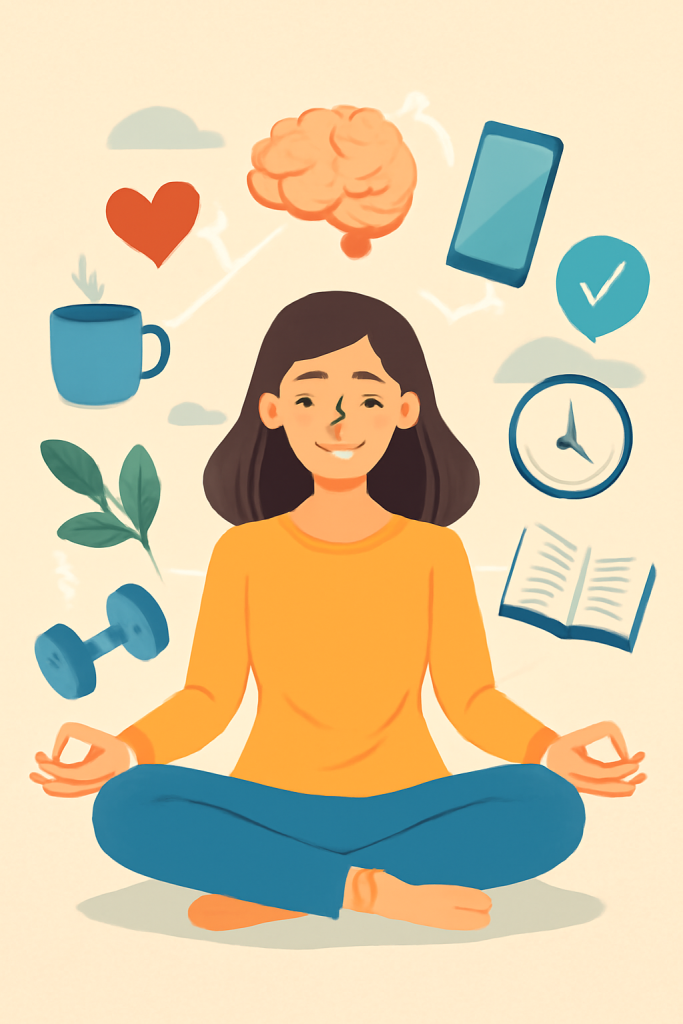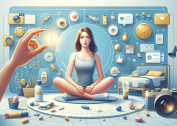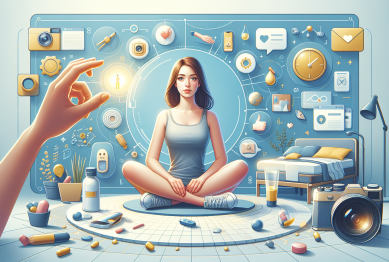It’s not just time or money that’s being guarded fiercely—it’s mental energy. With back-to-back Zoom calls, infinite doomscrolling, and the pressure to “optimize” every moment, people are finding themselves mentally spent before lunch. Protecting this limited resource isn’t just smart—it’s survival. The good news? A wave of practical, science-backed strategies in mental energy is emerging to help.

1. Mental Fitness: The New Physical Fitness
Think of your brain like a high-performance engine. Without regular maintenance, it underperforms. Enter the trend of mental fitness—daily habits that exercise your cognitive muscle.
Mental fitness includes activities like journaling, brain-training games, and mindfulness practices. These aren’t just buzzwords. According to a study published by Harvard Health Publishing, regular mindfulness meditation can improve attention span and reduce emotional reactivity (Harvard Health Publishing, 2021). Apps like Headspace and Lumosity have capitalized on this, offering accessible tools to keep your brain sharp.
Corporate giants such as Google have already incorporated mental fitness into employee wellness programs, suggesting it’s more than a fad—it’s a movement (Asana 2025).
2. Structured Breaks: The 3M Rule
Gone are the days when long hours meant productivity. Today, it’s all about strategic breaks. Enter the 3M Rule:
- Micro breaks: 1–5 minutes every hour (e.g., standing, stretching)
- Meso breaks: 30–60 minutes once a week (e.g., hiking, reading)
- Macro breaks: 1–3 days monthly (e.g., digital detox, mini-vacations)
This structured break model aligns with findings from the University of Illinois, which reveal that short breaks during tasks improve focus and prevent decision fatigue (Ariga and Lleras 2011). Employers are even redesigning schedules to include “mental reset windows.”
3. Guard Your Digital Doorway
A rising trend in 2025 is digital gatekeeping—setting strict boundaries for online interactions. Tools like Freedom and RescueTime help block distracting apps and track usage patterns.
And it’s not just about limiting distractions. Digital overuse is linked to anxiety, poor sleep, and even depression. A 2020 study by arXiv revealed that constant device switching causes cognitive load spikes, draining energy rapidly (Moisander et al. 2020).
Practical tip: Turn off non-essential notifications and use “Do Not Disturb” modes during work blocks.
4. Breathing Techniques That Actually Work
Forget complicated yoga poses—breathing techniques are becoming a go-to mental reset for professionals and students alike.
Here are three backed by science:
- Box Breathing (4-4-4-4): Used by Navy SEALs, this technique improves focus and calms nerves.
- Abdominal Breathing: Encourages full oxygen exchange, decreasing heart rate and blood pressure.
- Humming Bee Breath (Bhramari): Proven to reduce anxiety and improve sleep quality (Times of India, 2025).
These techniques are now part of wellness programs in top universities and health clinics, making them easy to adopt and hard to ignore.
5. The Sleep-Fuel Connection
It’s no longer just about getting enough sleep—it’s about quality. Sleep disorders spiked during the remote work era, with poor boundaries leading to digital insomnia.
Sleep studies in 2024 highlighted that deep, REM sleep contributes significantly to emotional regulation and memory consolidation. Experts recommend:
- Going to bed and waking up at the same time every day
- Avoiding screens 90 minutes before bed
- Creating a “sleep cave”: cool, dark, and quiet
Foods like kiwi, almonds, and chamomile tea are now known to support natural melatonin production, further enhancing sleep (Phoenix Bioscience Core 2025).
6. Food as Cognitive Fuel
What you eat directly impacts how you think. The MIND diet—rich in berries, nuts, and leafy greens—has shown to improve mental performance and reduce Alzheimer’s risk.
Nutritionists now emphasize “brain fuel meals” that combine complex carbs (for energy), healthy fats (for neuron protection), and lean proteins (for neurotransmitter support).
Top picks:
- Avocado toast with whole grains
- Greek yogurt with walnuts and blueberries
- Green tea instead of coffee for steady energy
A study by the University of Toronto linked omega-3 intake with improved working memory and reaction time (Toronto Health Journal 2023).
7. Physical Movement, Mental Gains
Exercise isn’t just for abs—it’s for attitude. Daily physical activity has a profound impact on mental clarity and mood.
Short, intense bursts (HIIT) or even brisk 20-minute walks have been shown to boost dopamine and serotonin, combatting anxiety and fatigue. And resistance training improves executive function, according to a recent study in Neuropsychologia (Clark et al. 2024).
Workplace culture is catching up. Walking meetings, standing desks, and midday workout breaks are trending as part of corporate wellness initiatives in 2025.
8. Boundaries: Learn to Say No
Saying “no” is the new power move. Psychologists now teach boundary-setting as a cognitive defense mechanism. It saves energy by reducing decision fatigue and protecting focus.
A popular framework? The “Three Buckets” method:
- Must Do
- Nice to Do
- Not Now
Apply this not just to work but social commitments and digital conversations too. Prioritizing rest and saying no to non-essential tasks is now considered a mental health necessity (Time Magazine 2025).
9. Leverage Technology—Mindfully
While overuse is harmful, smart tech can be a mental energy asset. Apps like Notion and Todoist streamline task management. AI voice assistants handle minor tasks, freeing cognitive space.
Sleep-tracking wearables like Oura and Garmin suggest personalized recovery routines. And AI chatbots like Woebot provide mental check-ins, acting as digital therapists for early intervention.
The trick? Intentionality. Use tech to reduce friction—not to fill every gap.
Conclusion: Energy Is the New Productivity
In 2025, productivity isn’t about doing more—it’s about managing mental resources wisely. The practical ways to protect mental energy aren’t gimmicks; they’re tools supported by neuroscience, psychology, and workplace innovation.
From breathing better to eating smarter, sleeping soundly to setting boundaries, the playbook for mental clarity is finally within reach. And with burnout rates hitting record highs in 2024, now’s the time to act.
Protect your mind—it’s your most valuable asset in the modern world.
References
- Harvard Health Publishing (2021) Mindfulness meditation may ease anxiety, mental stress. Available at: https://www.health.harvard.edu/mind-and-mood/mindfulness-meditation-may-ease-anxiety-mental-stress (Accessed: 21 May 2025).
- Asana (2025) How to protect your energy in a chaotic world. Available at: https://asana.com/resources/how-to-protect-your-energy (Accessed: 21 May 2025).
- Moisander J. et al. (2020) Digital Detox – Mitigating Digital Overuse. arXiv. Available at: https://arxiv.org/abs/2012.09535 (Accessed: 21 May 2025).
- Times of India (2025) 6 simple breathing techniques to instantly calm you down. Available at: https://timesofindia.indiatimes.com (Accessed: 21 May 2025).
- Phoenix Bioscience Core (2025) Enhance a Healthy Mind in 2025. Available at: https://phoenixbiosciencecore.com/news/enhance-a-healthy-mind-in-2025/01/2025 (Accessed: 21 May 2025).
- Global Wellness Institute (2025) Mental Wellness Initiative Trends for 2025. Available at: https://globalwellnessinstitute.org/global-wellness-institute-blog/2025/04/02/mental-wellness-initiative-trends-for-2025 (Accessed: 21 May 2025).
- Time Magazine (2025) New Year’s Resolutions: Set boundaries, improve mental health. Available at: https://time.com/7200863/new-years-resolutions-set-boundaries-mental-health/ (Accessed: 21 May 2025).
- Toronto Health Journal (2023) Omega-3s and the Mind. Available at: https://thj.ca/omega3-cognition (Accessed: 21 May 2025).









